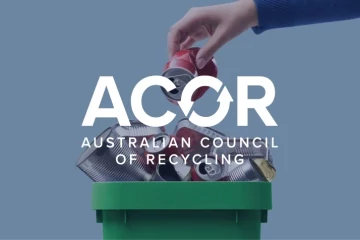What happens to the products we buy when they reach the end of their useful life? Increasingly, this is on both customers’ and policy makers’ minds: will today’s essential purchase become tomorrow’s landfill mountain or pollution risk? Product stewardship schemes, in which brands or manufacturers take responsibility for their products at the end of their life, can be the answer—but only if they’re done right.
As the link that closes the loop in a circular economy, recycling is an essential component of product stewardship. Recyclers are the backbone of this process, performing the essential work of recovering and remaking. Yet, there is often a disconnect between product stewardship priorities and the practical reality of recycling.
The Australian Council of Recycling’s report, Recyclers in Product Stewardship, cuts through the hype to identify what’s really needed for product stewardship schemes to deliver genuine recycling outcomes.
Most of us are familiar with the container deposit schemes (CDS) that will soon be operating across all of Australia. Although these schemes operate slightly differently in each state or territory, the premise is simple: customers pay a small levy on bottles and cans, which is redeemed upon return to a collection point. This has helped to shift Australia’s recovery rate for eligible beverage containers to around 70%, and growing. Through these schemes, the beverage industry is on the right track, reducing litter, maximising recycling rates, generating revenue for charities, and enhancing their reputation as responsible corporate citizens.
Other product stewardship schemes should follow this path, through better governance, accountability, engagement and priority-setting.
To begin with, at the very start of a product’s journey, product designers need to design for repair, reuse, recovery and recycling. Ensuring that a product can reach a new life at the end of its first one also means investing in collection infrastructure to ensure it can be delivered to the right recovery facilities.
Recycling in Australia is not free or cheap, given the high costs of energy, labour, insurance, land and logistics and also the cost of adhering to stringent environmental regulation. Many of the materials addressed through stewardship schemes are low-value and hard to recover. The real cost of recycling must therefore be properly costed into the design of a scheme, to ensure a viable system.
We must also ensure there is genuine, robust market demand for recycled products or materials. Recyclers are production enterprises making products for markets. Product stewardship schemes that neglect market development for recycled materials are destined to deliver stockpiles of unprocessed waste—a sign of scheme failure. Strong markets, on the other hand, mean recycling companies can invest further in equipment and innovation, supporting growth and circular outcomes.
The community must also be incentivised to do their part. Strong marketing and awareness-building, convenience of collection points, as well as options such as deposit refunds, are a priority to support community engagement with product stewardship schemes.
Strong product stewardship governance, representing the entire supply chain (including recyclers), is fundamental to ensuring that schemes are effective, accountable and deliver enduring results. There must be clarity around objectives and processes, transparency about progress, and a commitment to address conflicts of interest that can be inherent in industry-led schemes.
Imagine a future where yesterday’s products become tomorrow’s resources, circulating within a circular economy that minimises waste, maximises resource efficiency and benefits the environment—and everyone involved. A better approach to product stewardship, which prioritises collaboration across the supply chain and genuinely invests in practical outcomes, is essential to reaching this future. For more detail on how to get there, check out our report: Recyclers in Product Stewardship.
By The Australian Council of Recycling

